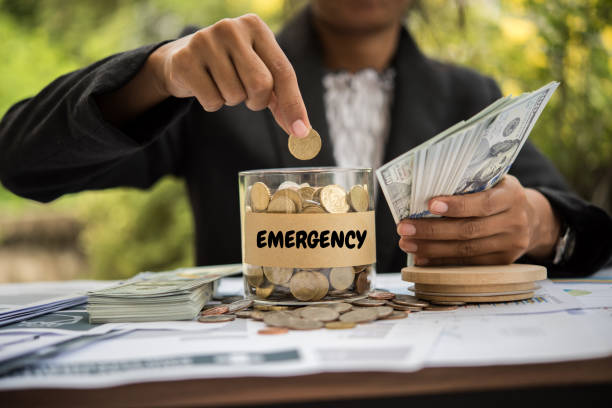Emergency Funds 101: Why You Need One and How to Build It
Life is unpredictable. From sudden medical bills to job loss or unexpected car repairs, emergencies strike when we least expect them. That’s why an emergency fund is one of the most essential pillars of financial stability. It acts as a financial cushion, helping you navigate tough times without spiraling into debt. Whether you’re just starting your financial journey or looking to strengthen your safety net, building an emergency fund is a must. Here’s how to do it right.

1. What Is an Emergency Fund?
An emergency fund is a dedicated savings account set aside for unplanned expenses. It’s not meant for vacations, shopping, or planned spending—it’s your financial safety net for life’s curveballs. From medical emergencies to sudden layoffs, this fund keeps you financially afloat during crisis situations.
2. Why It’s Crucial for Financial Health
Without an emergency fund, most people turn to credit cards or loans during tough times. This can lead to high-interest debt and long-term financial strain. An emergency fund provides peace of mind, giving you the confidence to handle setbacks without derailing your financial goals.
3. How Much Should You Save?
A general rule is to save 3 to 6 months’ worth of living expenses. For example, if your monthly expenses are ₹30,000, aim for ₹90,000 to ₹1,80,000. If your job or income is unstable, a larger buffer (6–9 months) might be smarter. Start small—every rupee counts—and build gradually.
4. Where to Keep Your Emergency Fund
It should be liquid (easy to access) but not so easy that you’re tempted to dip into it for non-emergencies. High-yield savings accounts, fixed deposits with partial withdrawal options, or money market accounts are good choices. Avoid locking it in long-term investments like stocks or real estate.
5. How to Start Building One
- Set a clear goal: Decide how much you need based on your lifestyle.
- Create a separate account: Keep it apart from your daily spending money.
- Automate savings: Set up automatic transfers to your emergency fund after each paycheck.
- Cut back temporarily: Reduce non-essential expenses like dining out, streaming subscriptions, or impulse buys.
- Use windfalls wisely: Tax refunds, bonuses, or gifts can give your fund a big boost.
6. What Qualifies as an Emergency?
Only dip into this fund for true emergencies. These include:
- Medical emergencies or unexpected health expenses
- Job loss or temporary unemployment
- Urgent home or car repairs
- Emergency travel (such as a family crisis)
Buying a new phone or booking a last-minute holiday does not qualify. Discipline is key to making your emergency fund last.
7. Don’t Stop Once You Reach Your Goal
Once you hit your savings target, that doesn’t mean you stop entirely. Replenish the fund if you use it, and consider adjusting it as your expenses or lifestyle change. It’s also smart to review your fund annually.
8. Common Mistakes to Avoid
- Using it as a general savings account
- Not saving enough to cover real expenses
- Keeping it in cash or in an account with no interest
- Neglecting to replenish it after use
Treat your emergency fund with the respect it deserves—it’s your financial lifeline.
Conclusion:
An emergency fund isn’t just smart—it’s essential. It protects your future, supports your peace of mind, and helps you stay on track even when life throws surprises your way. Start where you are, save what you can, and stay committed. With time, discipline, and consistent effort, your emergency fund will grow into a powerful financial shield.
